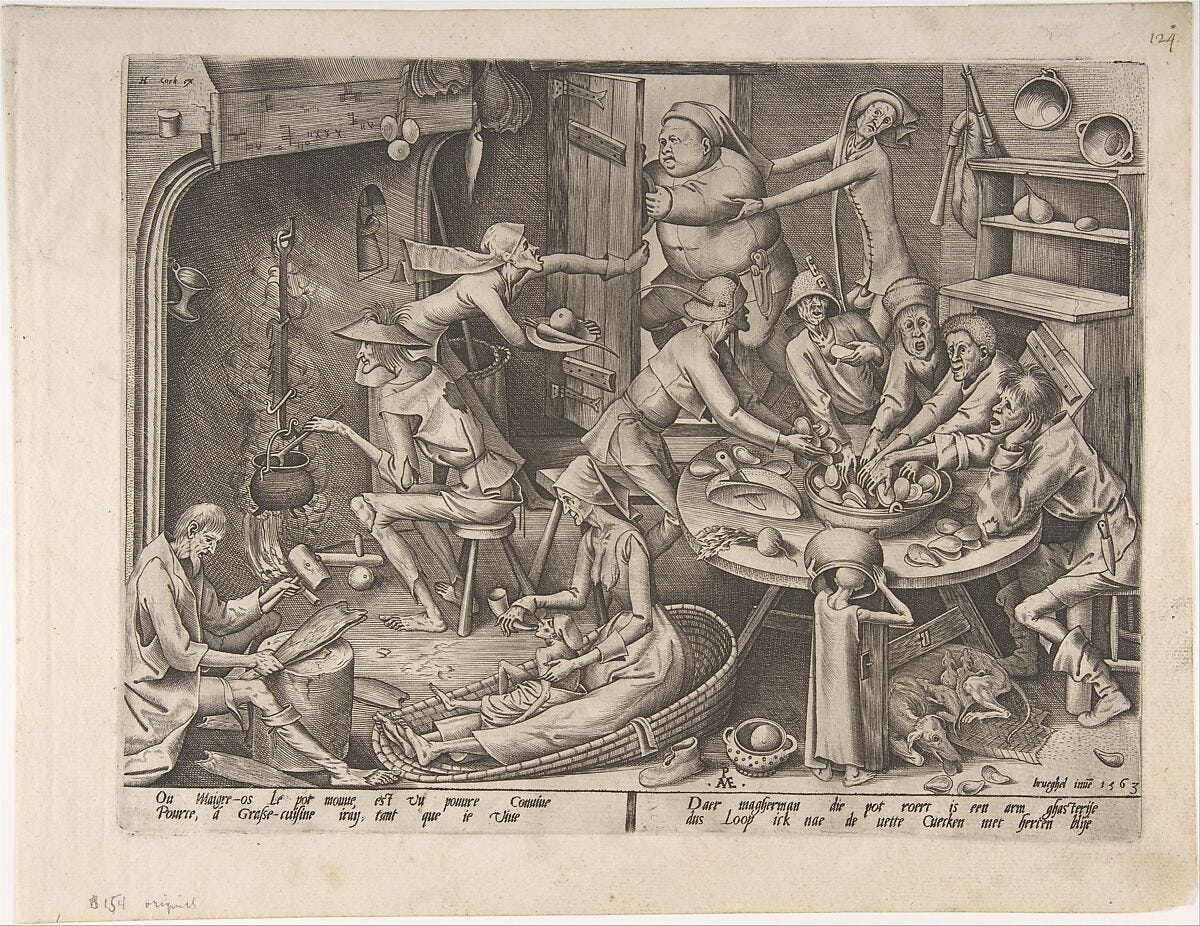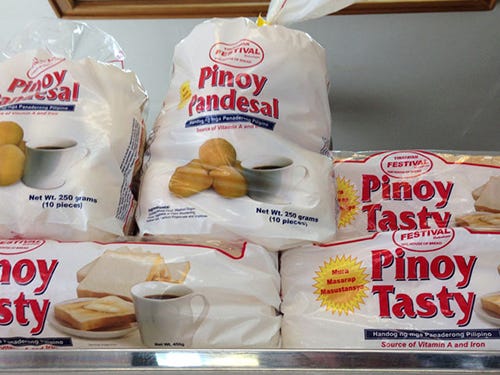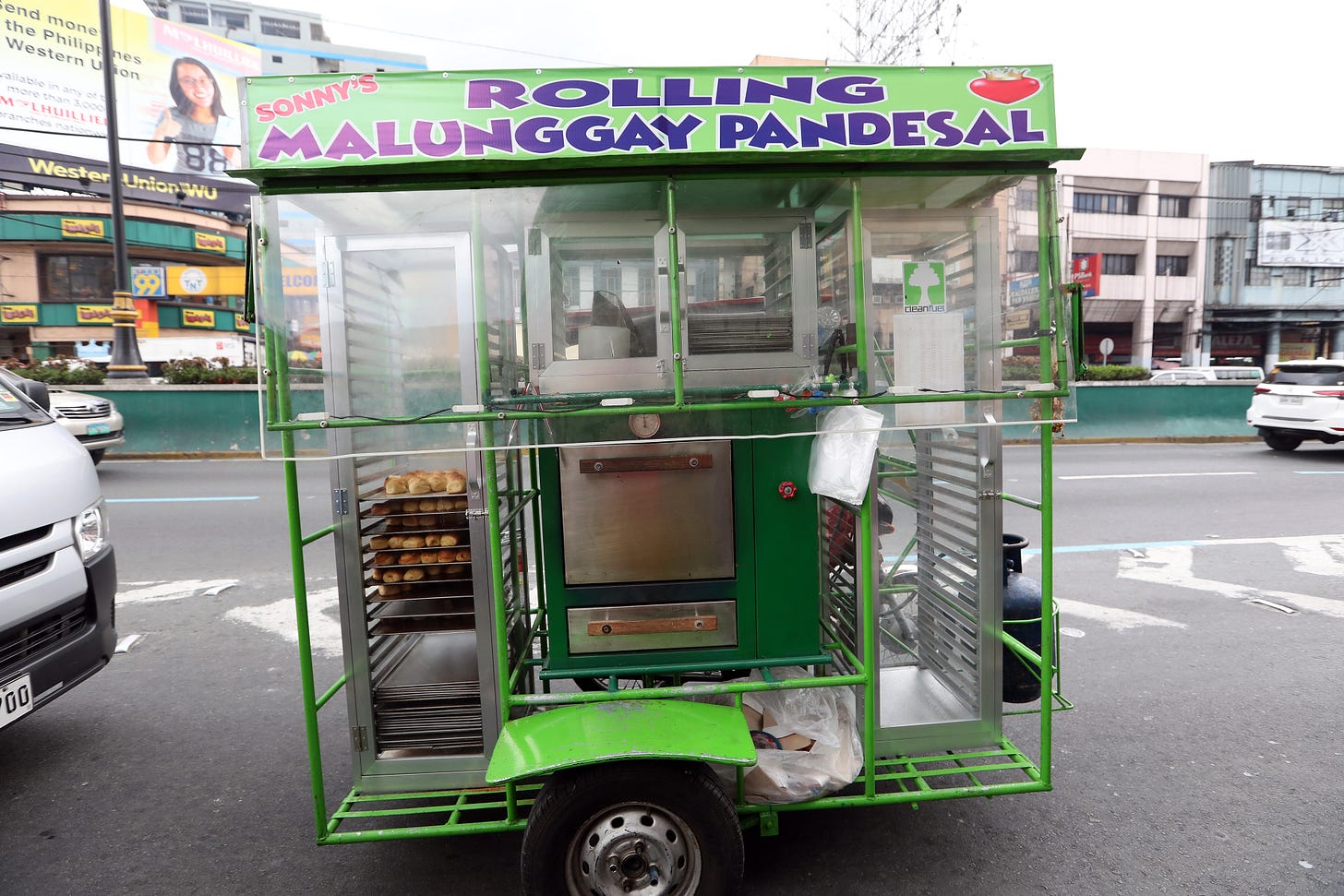The Unending Search for Bread (Part 2)
From bakery to a street food? The resilience of the every man bread
Dear Reader,
I am taking a break from the book series this week as I recover physically from the rigors of the quick research turnover for the last couple of weeks. I look forward to a post on medieval fish, a note about our mendicant orders, and closing out chapter 10.
Preview:

Meanwhile, catch up here:
In the meantime, I want to share some updated information about my bread story in the first post. All is not lost, I find. This is good.
Onward,
Melanie
Nothing is dying: baking creativity and resilience
I was mourning the loss of my memories of the bread of my childhood. It turns out that nothing dies.
It just transforms.
After my last post, I had a long Facebook conversation with my associate, our local Philippine researcher, Vincent Dinglasa1, about the loss of affordable bread. We chatted about the ridiculously pegged National Economic Development Authority’s food poverty threshold at 64 pesos per person or about 1.5 Euros per day for a family of five.2 Given this budget, there is no way that the humble bread, the pandesal, could remain affordable.

Based on these recommendations, it appeared that bread had altogether disappeared from the Philippine menu.
Of course, this is not the case.
Vince explained that 2 to 3 pesos of bread was still available in the form of Pinoy Pandesal and Pinoy Tasty (white loaf bread, our version of Wonderbread). This state subsidised brand is a result of the cooperation of the association of local bakeries, flour millers and the Department of Trade and Industry since 2001 to provide affordable bread to the general public.

Prices rely on the flour to sugar ratio. Yes, the bread is generally on the sweeter side rather than the salty side. Keeping the price stable is the priority.
The price of 8 pesos per piece, I was quoting from, refers to mid and upmarket retailers that offer heavier and denser pandesal.
Thanks to the research and insight of Vince.
If you were a smaller family-based business, you are essentially toast! It is hard to compete as retail space, labour costs, gas prices, flour and sugar prices increase. So businesses shuttered during the pandemic.
The solutions have become creative, bringing the bakery to the street consumer! Presenting the “rolling pandesal”…

The mobile bakery is one solution to the labour shortage and rental costs. This allows a one-man business to operate. I had not seen one when I visited the last time. This might just be a pandemic specific solution. I will explore the streets again once I return.
Meanwhile, a wondrous bakery opened in the Hague to rival any Parisian croissant, Bartine Bakery. They have a perfectly rolled croissant using the best butter (French?).

Others swear by the cardamom bun that they offer.

I bought one and the spice was very strong and not to my liking. I must say though that it is good if you do like the flavour.
Their sourdough white loaf is very very tasty. Unfortunately, unless you live near the area in the Hague, it is hard to get them in the afternoon. They bake in limited quantities, no online orders, or pre-orders for pick-up, possible. Bummer!

They mention that they purchase their grains locally from De Vrijheid Schiedam stone mill, two towns away by train (about 26 kilometers one way). To be clear, the flour is ground locally but may be sourced elsewhere: heritage varieties from Zeeland or North Brabant province (Made) in the south of the Netherlands, or France or Belgium (Commandeursmolen Mechelen). I know this because the labelling in another miller shows sources from those countries. Despite this, stone ground flour packaged or milled locally keeps these heritage mills operational without sacrificing taste! This is the best way you can make tastier products at home.
Since the store always runs out by the time I get there, I am still on a lookout for another bakery. These projects were born out of lockdowns and people looking for something else to do, and I do agree, the Netherlands need more higher quality bread as part of the mainstream diet.
All this talk of bread and now I am hungry for a baked good.
Off to bake now.
For the year 2025, the metrics remain the same, with only a few pesos increase anywhere from PHP 65-67 pesos, converted to Euros, are practically the same and still below EUR 2. Non-profit research organisation, IBON Foundation, which publishes socio-economic facts and figures, explain that the government criteria for computation assume:
least cost method - the lowest possible price point that people can access at the time of purchase
cooked at home and not bought from the store
macronutrient calculation
IBON argues that this computation ignores the higher retail prices compared to wholesale purchases, food variety, and other expenses of the family. The organisation argue that if you do account for other factors, the figure comes closer to PHP 90 or less than EUR 2.50 per day. A figure that is higher and reasonable.




